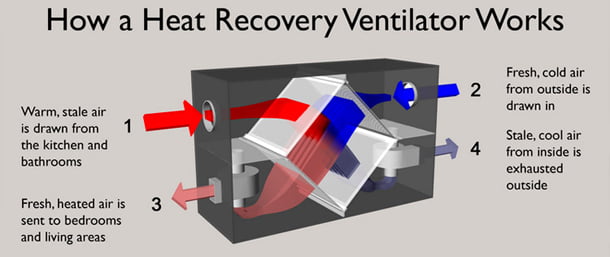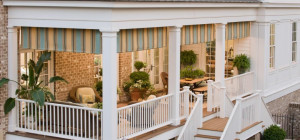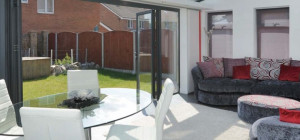If your intention was to reduce your monthly energy bills, or you’re conscious of your energy consumption for ecological reasons, you may have considered going for heat recovery ventilation. And in many cases, heat recovery systems can be a great way to cut energy costs and energy consumption. However, while heat recovery ventilation might be a great option for many, there are some cases where it might not be the best suited. There are some details about these systems that people have to know before they make an investment. Let’s take a look at some of the pros and cons of heat recovery ventilation.

PROS
Will Lower Your Energy Bills
If you already have heating and use AC in the summer, you can make some significant savings using a heat recovery system. As a matter of fact, it has been estimated that you could save anywhere from 25 to 50 percent on your heating bills by installing an MVHR system in your home. This means that you could eventually end up recuperating the installation costs in as little as five years. Not to mention that you’ll be able to pass down these savings to anyone you decide to sell that home to and use it as a selling point to increase the value of the property.
It Will Reduce Your Carbon Footprint
If all you care about is reducing your carbon footprint and doing your part to protect the environment, going for heat recovery ventilation is a great option.
The way these systems help you consume less energy is simple. First, the ventilation system will suck the hot air from your house and expel it outside while it pulls fresh air in. Where they differ from other ventilation systems, however, is that they are built to transfer heat from the air going out to the air going in. This allows you to save on heating costs in the winter. In the summer, it transfers coolness from your house’s conditioned air to the hot air coming in.
Can Work Wonders for Air Quality
Heat recovery ventilation systems do much more than simply exchange heat and coolness between airflow. They are also great at maintaining a steady flow of fresh, clean air inside the house. Also, they can help reduce the amount of condensation and humidity in the house, which can not only reduce the chances of developing health issues, but is great for maintaining the structural integrity of the house. Walls are especially vulnerable to humidity, and anything you can do to keep the air inside as dry as possible while still being comfortable will be beneficial to them.

CONS
Can Put Some Stress on Your AC System
For heat recovery systems to work in the summer, however, there are chances you will still need AC. So, while most people have heating, not everyone uses AC, and heat recovery units often struggle when it comes to cooling down air with no conditioning. However, it still depends on where you live in the country and what type of temperatures you have to deal with. You might be able to get by with no AC if you have never needed it in the first place.
They Can Take Up Space
Another issue with heat recovery systems is that they can take a lot of space, so you’ll have to make sure that you have the space necessary in your home to install one. Also, retrofitting an older home with a heat recovery ventilation system can be a nightmare and close to impossible in some cases.This is mainly because older homes don’t havehermetic packagesthat are as seal tight as new ones. But that doesn’t mean that it will be impossible in all cases. Professionals will be able to inspect your dwellings and see whether your home is hermetic enough for these systems to be efficient.
Conclusion
Now that you know a little bit more about heat recovery ventilation, you’ll be able to make a more informed decision and see if the option is even viable for your propriety. If you still have questions, we suggest you speak with a reputable contractor and they’ll be more than happy to answer them for you.







